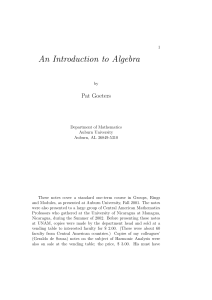ALGEBRAIC NUMBER THEORY 1. Section 3.3
advertisement
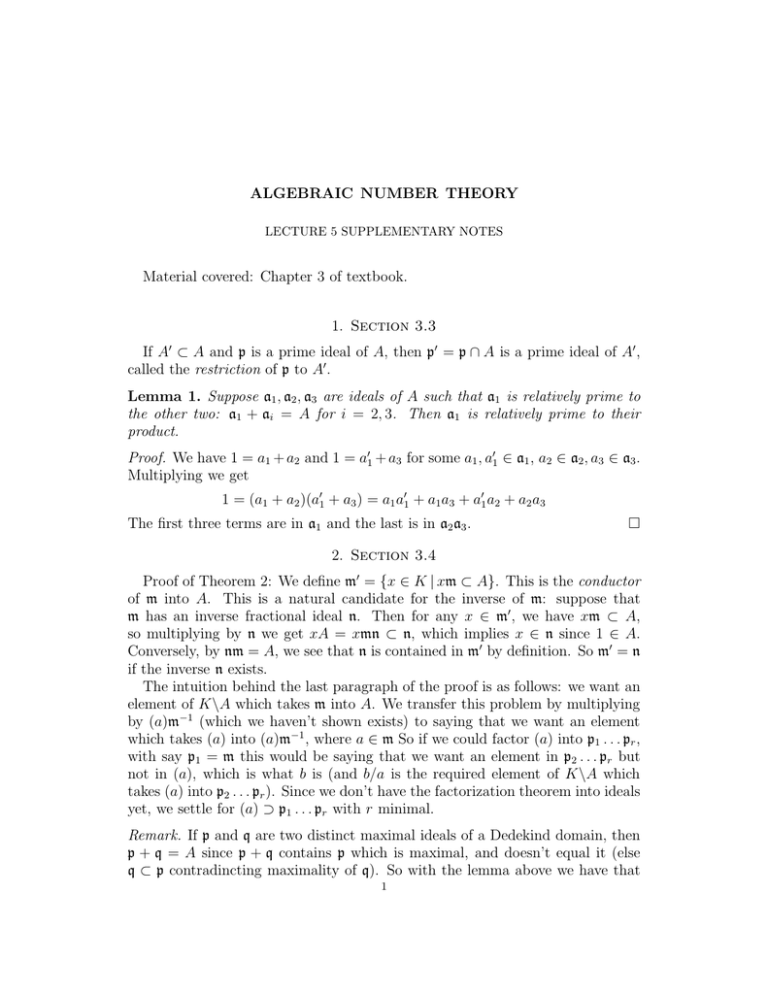
ALGEBRAIC NUMBER THEORY
LECTURE 5 SUPPLEMENTARY NOTES
Material covered: Chapter 3 of textbook.
1. Section 3.3
If A′ ⊂ A and p is a prime ideal of A, then p′ = p ∩ A is a prime ideal of A′ ,
called the restriction of p to A′ .
Lemma 1. Suppose a1 , a2 , a3 are ideals of A such that a1 is relatively prime to
the other two: a1 + ai = A for i = 2, 3. Then a1 is relatively prime to their
product.
Proof. We have 1 = a1 + a2 and 1 = a′1 + a3 for some a1 , a′1 ∈ a1 , a2 ∈ a2 , a3 ∈ a3 .
Multiplying we get
1 = (a1 + a2 )(a′1 + a3 ) = a1 a′1 + a1 a3 + a′1 a2 + a2 a3
The first three terms are in a1 and the last is in a2 a3 .
�
2. Section 3.4
Proof of Theorem 2: We define m′ = {x ∈ K | xm ⊂ A}. This is the conductor
of m into A. This is a natural candidate for the inverse of m: suppose that
m has an inverse fractional ideal n. Then for any x ∈ m′ , we have xm ⊂ A,
so multiplying by n we get xA = xmn ⊂ n, which implies x ∈ n since 1 ∈ A.
Conversely, by nm = A, we see that n is contained in m′ by definition. So m′ = n
if the inverse n exists.
The intuition behind the last paragraph of the proof is as follows: we want an
element of K\A which takes m into A. We transfer this problem by multiplying
by (a)m−1 (which we haven’t shown exists) to saying that we want an element
which takes (a) into (a)m−1 , where a ∈ m So if we could factor (a) into p1 . . . pr ,
with say p1 = m this would be saying that we want an element in p2 . . . pr but
not in (a), which is what b is (and b/a is the required element of K\A which
takes (a) into p2 . . . pr ). Since we don’t have the factorization theorem into ideals
yet, we settle for (a) ⊃ p1 . . . pr with r minimal.
Remark. If p and q are two distinct maximal ideals of a Dedekind domain, then
p + q = A since p + q contains p which is maximal, and doesn’t equal it (else
q ⊂ p contradincting maximality of q). So with the lemma above we have that
1
2
LECTURE 5 SUPPLEMENTARY NOTES
if p1 , . . . , pr , q1 , . . . , qs are all distinct maximal ideals of the Dedekind domain A,
then for any nonnegative integers ei and fj
�
� f
peii +
qj j = A
i
j
This leads directly to the proof that np(a + b) = inf(np(a), np(b).
MIT OpenCourseWare
http://ocw.mit.edu
18.786 Topics in Algebraic Number Theory
Spring 2010
For information about citing these materials or our Terms of Use, visit: http://ocw.mit.edu/terms.



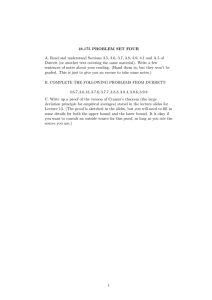
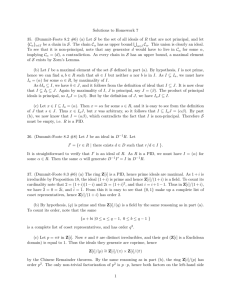
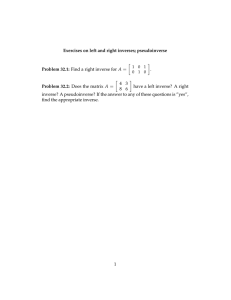
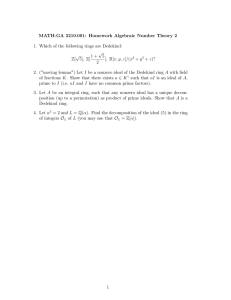
![ComAlg0[1]](http://s2.studylib.net/store/data/026281316_1-2a7dbb812c357ff1e73b17c805aefe24-300x300.png)
